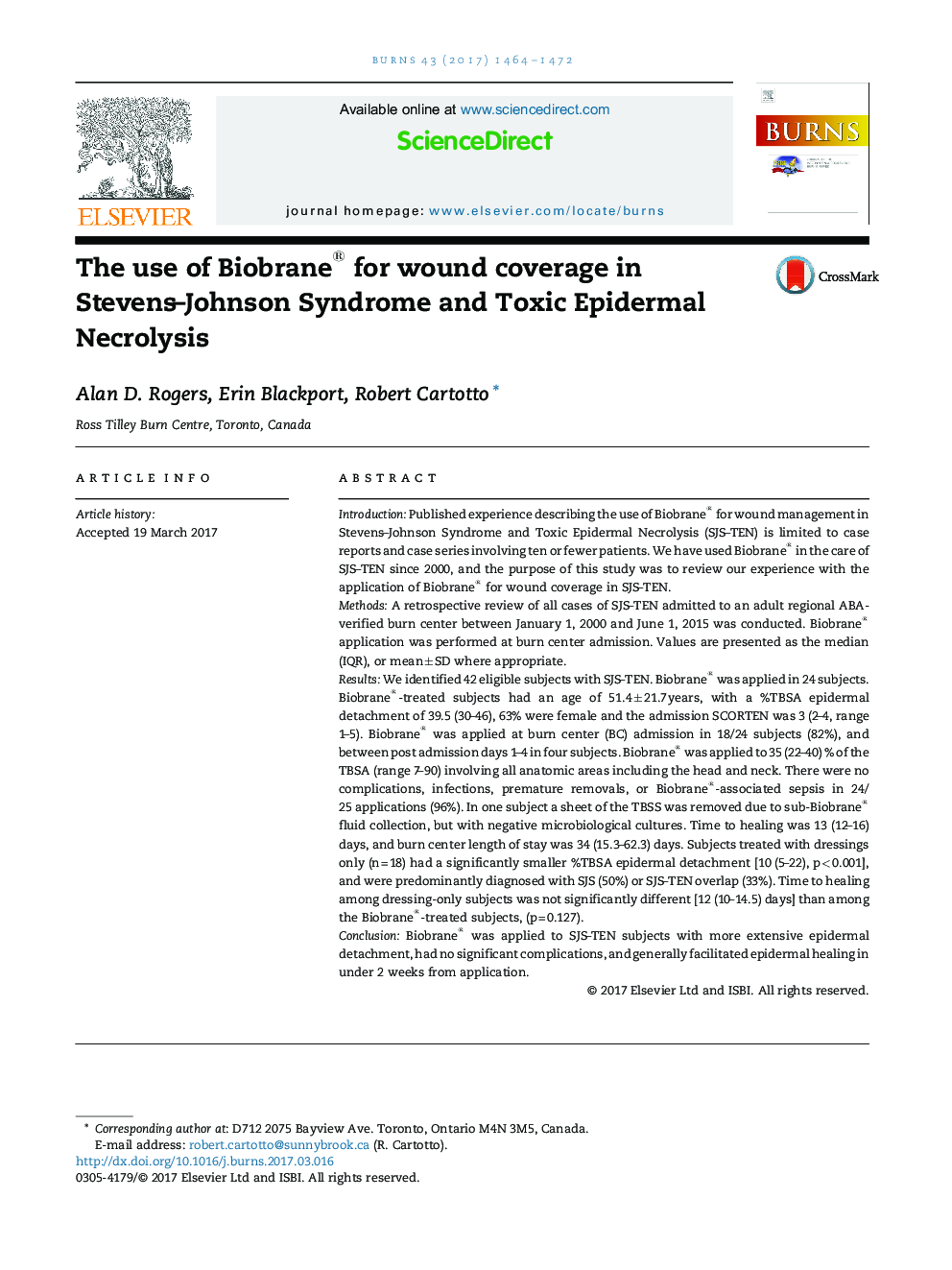| Article ID | Journal | Published Year | Pages | File Type |
|---|---|---|---|---|
| 5635949 | Burns | 2017 | 9 Pages |
â¢This is the largest reported experience to date with use of Biobrane among adults with SJS-TEN.â¢Biobrane was applied to patients with a median epidermal detachment of 40% TBSA.â¢There were no complications, infections, or premature removals of Biobrane in 24/25 cases (96%).â¢Healing of wounds covered with Biobrane occurred at a median of 13 days post burn center admission.â¢The main factor determining Biobrane use instead of a simple dressing was the extent of epidermal detachment.
IntroductionPublished experience describing the use of Biobrane® for wound management in Stevens-Johnson Syndrome and Toxic Epidermal Necrolysis (SJS-TEN) is limited to case reports and case series involving ten or fewer patients. We have used Biobrane® in the care of SJS-TEN since 2000, and the purpose of this study was to review our experience with the application of Biobrane® for wound coverage in SJS-TEN.MethodsA retrospective review of all cases of SJS-TEN admitted to an adult regional ABA-verified burn center between January 1, 2000 and June 1, 2015 was conducted. Biobrane® application was performed at burn center admission. Values are presented as the median (IQR), or mean ± SD where appropriate.ResultsWe identified 42 eligible subjects with SJS-TEN. Biobrane® was applied in 24 subjects. Biobrane®-treated subjects had an age of 51.4 ± 21.7 years, with a %TBSA epidermal detachment of 39.5 (30-46), 63% were female and the admission SCORTEN was 3 (2-4, range 1-5). Biobrane® was applied at burn center (BC) admission in 18/24 subjects (82%), and between post admission days 1-4 in four subjects. Biobrane® was applied to 35 (22-40) % of the TBSA (range 7-90) involving all anatomic areas including the head and neck. There were no complications, infections, premature removals, or Biobrane®-associated sepsis in 24/25 applications (96%). In one subject a sheet of the TBSS was removed due to sub-Biobrane® fluid collection, but with negative microbiological cultures. Time to healing was 13 (12-16) days, and burn center length of stay was 34 (15.3-62.3) days. Subjects treated with dressings only (n = 18) had a significantly smaller %TBSA epidermal detachment [10 (5-22), p < 0.001], and were predominantly diagnosed with SJS (50%) or SJS-TEN overlap (33%). Time to healing among dressing-only subjects was not significantly different [12 (10-14.5) days] than among the Biobrane®-treated subjects, (p = 0.127).ConclusionBiobrane® was applied to SJS-TEN subjects with more extensive epidermal detachment, had no significant complications, and generally facilitated epidermal healing in under 2 weeks from application.
